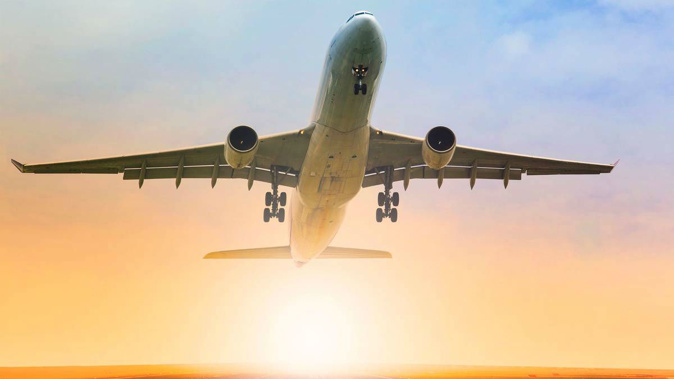
Air fares and hotel prices in New Zealand are forecast to climb for business travellers at nearly three times the global average next year.
The cost of air travel is forecast to climb 7.5 per cent (against a global average of 2.6 per cent) and room rates are predicted to soar by 11.8 per cent (compared to 3.7 per cent), according to research by the Global Business Travel Association and Carlson Wagonlit Travel (CWT), a global travel management company.
The New Zealand price rises far outstrip the Asia-Pacific region where air fares are forecast to go up 2.6 per cent overall and hotel rates up 3.7 per cent.
Global growth hit a cyclical bottom in 2016, but economic prospects have been steadily improving since fueling demand by business travellers for flights and hotels.
The report notes the risk posed by trade tension but says the global economic growth will hit 3.4 per cent in 2018, and further growth of 3.4 per cent is forecast in 2019.
Early signs indicate strong demand for business travel as economic growth and corporate travel are tightly correlated.
As oil prices continue to climb from the lows of 2016, this could fuel demand from a revitalised energy sector (whose staff often travel in premium cabins) and traditionally a key driver of air travel. However, this increases costs for airlines, which are passed on to passengers.
According to the United States Energy Information Administration, jet fuel demand growth will outpace that of other petroleum products, putting even more pressure on airlines.
International Air Transport Association figures show jet fuel prices up more than 40 per cent in Asia and Oceania during the past year.
Airlines were also feeling pressure from rising labour costs with pilots in hot demand.
Across the industry labour costs are estimated at 31 per cent and fuel costs just over 20 per cent although fuel makes up a bigger proportion of expenses for airlines travelling long haul routes to more remote destinations such as New Zealand.
The CWT report echoes one done for Flight Centre's corporate travel arm, FCM, which revealed that on domestic routes, Air New Zealand - which has 81 per cent of the market - increased average domestic published fares by 5.1 per cent last year.
The FCM report estimated that these fares will rise by a further 4-5 per cent across the top routes measured.
On trans-Tasman routes, economy class published airfares across all airlines increased 2.9 per cent and business class by 3.7 per cent during 2017, and there was likely to be a 3-4 per cent increase on key routes in both classes for the year ahead.
Last year in business class, there was an 18.5 per cent increase in fares across the top 10 routes studied.
The CWT report finds that global growth hit a cyclical bottom in 2016, but economic prospects have been steadily improving since fueling demand by business travellers.
The report notes the risk posed by trade tension but says the global economic growth will hit 3.4 per cent in 2018, and further growth of 3.4 per cent is forecast in 2019.
The report says the Asia Pacific region (APAC) continues to be the most dynamic in the global economy.
/arc-anglerfish-syd-prod-nzme.s3.amazonaws.com/public/J5H426XXQFE7PHQPI2F3N2QHZE.jpg)
According to the International Monetary Fund, Asia growth is forecast at 5.6 per cent in 2019.
Inflation has been subdued, but looking ahead, it may rise in Asia with the increase in commodity prices. The sheer growth in tourism and business travel, particularly coming from China (now the world's largest corporate travel market and New Zealand's second biggest source of visitors), will have an ''overwhelming'' effect on supply and demand dynamics across APAC.
''As pressure increases on accommodation providers, corporate travel buyers will face challenges in their ability to secure rooms at their preferred properties, much less at their preferred rates.''
In aviation, one of the challenges will be around capacity - both in terms of seat availability and the infrastructure in many of the region's airports.
''While this is helping to keep prices buoyant, we expect prices will rise as the pace of demand growth is currently outstripping supply growth.''
In aviation, one of the challenges will be around capacity - both in terms of seat availability and the infrastructure in many of the region's airports, the report says.
10 ways to get the cheapest flights
• Use a private browser.
• Consider flying mid-week.
• Monitor airline websites.
• Book six weeks in advance.
• Use a "hidden city": fly to a connecting destination rather than a final one (not recommended by airlines).
• Travel during the off-season.
• Use the Google Flights calendar to discover the cheapest return flights in a month
• Look up regional budget airlines that might not appear on flight aggregator sites like Expedia or Kayak.
• Compare the price on a flight aggregator site to the cost of booking directly through the airline (the same flight on the airline's website is sometimes a little cheaper).
• Be flexible about your holiday destination. Look into whether there might be cheaper flight options to neighbouring countries or islands
Take your Radio, Podcasts and Music with you









